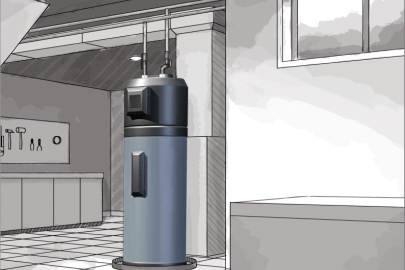Professional Advice for Maintaining Your Home's Hot Water System
Professional Advice for Maintaining Your Home's Hot Water System
Blog Article
We have unearthed this post pertaining to Tips on Maintaining a Water Heater directly below on the web and decided it made good sense to write about it with you on this site.

Warm water is necessary for daily convenience, whether it's for a refreshing shower or cleaning recipes. To ensure your warm water system runs effectively and lasts longer, routine upkeep is essential. This article offers sensible ideas and insights on how to keep your home's hot water system to avoid disruptions and expensive repair services.
Introduction
Keeping your home's warm water system might seem difficult, yet with a few simple actions, you can guarantee it operates efficiently for many years to find. This overview covers whatever from understanding your hot water system to DIY maintenance suggestions and knowing when to employ specialist assistance.
Value of Keeping Your Warm Water System
Normal upkeep not just expands the life expectancy of your warm water system but likewise guarantees it runs successfully. Neglecting upkeep can result in decreased efficiency, higher energy expenses, and also early failing of the system.
Signs Your Hot Water System Requirements Maintenance
Recognizing when your warm water system requires focus can protect against significant concerns. Look out for signs such as inconsistent water temperature, strange noises from the heater, or corroded water.
Purging the Hot Water Heater
Purging your hot water heater gets rid of debris accumulation, enhancing efficiency and prolonging its life.
Checking and Replacing Anode Rods
Anode poles protect against deterioration inside the container. Evaluating and replacing them when worn is vital.
Complicated Problems Needing Professional Help
Instances consist of major leaks, electric troubles, or if your hot water heater is constantly underperforming.
Routine Professional Upkeep Perks
Expert maintenance can consist of detailed examinations, tune-ups, and making sure compliance with safety and security criteria.
Checking and Adjusting Temperature Setups
Changing the temperature setups guarantees optimal efficiency and security.
DIY Tips for Upkeep
You can carry out several upkeep tasks on your own to keep your warm water system in leading condition.
Looking for Leaks
Regularly check pipes and links for leaks, as these can bring about water damage and greater expenses.
Understanding Your Hot Water System
Prior to diving into upkeep tasks, it's helpful to recognize the fundamental parts of your hot water system. Normally, this includes the hot water heater itself, pipes, anode poles, and temperature controls.
Regular Monthly Maintenance Tasks
Regular regular monthly checks can aid catch small concerns prior to they escalate.
Examining Pressure Alleviation Valves
Checking the stress safety valve guarantees it works appropriately and stops excessive pressure build-up.
Insulating Pipelines
Shielding hot water pipes minimizes warmth loss and can conserve energy.
When to Call a Professional
While DIY upkeep is useful, some concerns call for specialist know-how.
Conclusion
Routine upkeep of your home's warm water system is important for effectiveness, long life, and price savings. By complying with these pointers and knowing when to seek expert aid, you can ensure a dependable supply of warm water without unanticipated disturbances.
How to Maintain an Instant Hot Water Heater
Before tinkering with your hot water heater, make sure that it’s not powered on. You also have to turn off the main circuit breaker and shut off the main gas line to prevent accidents. Also turn off the water valves connected to your unit to prevent water from flowing into and out of the appliance. 2. When you’re done, you have to detach the purge valves’ caps. These look like the letter “T†and are situated on either side of the water valves. Doing so will release any pressure that has accumulated inside the valves while at the same time avoid hot water from shooting out and burning your skin. 3. When the purge valves’ caps are removed, you have to connect your hosing lines to the valves. Your unit should have come with three hoses but if it didn’t, you can purchase these things from any hardware or home repair shops. You can also get them from retail stores that sell water heating systems. Read the user’s manual and follow it to complete this task properly. When the hosing lines are connected, open the purge port’s valves. 4. You should never use harsh chemical cleaners or solutions when cleaning your unit. Make use of white vinegar instead. It should be undiluted and you’ll probably use about 2 gallons. 5. Now flush your water heater. This task should probably take about 40 minutes. We can’t give you specific directions for this because the procedure is carried out depending on the type, model and brand of your heater. With that being said, refer to the user’s manual. 6. When you’re done draining the unit, you have to turn off the purge port valves again. Remove the hosing lines that you earlier installed on each of the water valves. Put the valve caps (purge port) back in their respective places and be very careful so as not to damage the rubber discs that are found inside these caps. 7. Now that everything’s back in place, check your user’s manual again to find out how to reactivate your water heating system. 8. Once it is working, turn one of your hot water faucets on just to let air pass through the heater’s water supply pipes. Leave the tap on until water flows smoothly out of it. https://www.orrplumbing.com/blog/2014/september/how-to-maintain-an-instant-hot-water-heater/

Do you enjoy reading up on Water Heater Maintenance Tips You Can't Afford to Forget? Leave a short review down the page. We will be delighted to hear your responses about this blog. In hopes that you visit us again soon. If you liked our post kindly make sure you remember to share it. I take joy in reading our article about How to Maintain a Hot Water Heater in a Few Simple Steps.
Call Today Report this page